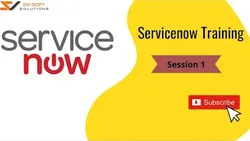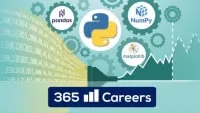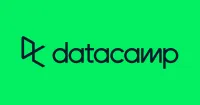
Interpreting and Communicating Data Insights in Business 
Explore the essentials of Interpreting and Communicating Data Insights in Business ▼
ADVERTISEMENT
Course Feature
![]() Cost:
Cost:
Free Trial
![]() Provider:
Provider:
QuickStart
![]() Certificate:
Certificate:
No Information
![]() Language:
Language:
English
![]() Start Date:
Start Date:
Self Paced
Course Overview
❗The content presented here is sourced directly from QuickStart platform. For comprehensive course details, including enrollment information, simply click on the 'Go to class' link on our website.
Updated in [May 19th, 2023]
This course provides an introduction to the fundamentals of interpreting and communicating data insights in business. It is designed to help learners develop the skills and knowledge necessary to effectively interpret and communicate data insights to business audiences.
The course begins by introducing learners to the basics of data analysis and interpretation. Learners will explore the different types of data analysis and the various methods used to interpret data. They will also learn how to identify and analyze patterns in data.
Next, learners will explore the different methods of communicating data insights to business audiences. They will learn how to effectively present data insights in a way that is meaningful and actionable. They will also learn how to use visualizations to communicate data insights.
The course then focuses on the importance of data storytelling. Learners will learn how to craft compelling stories that effectively communicate data insights. They will also learn how to use storytelling techniques to engage and motivate business audiences.
Finally, learners will explore the ethical considerations of interpreting and communicating data insights. They will learn how to ensure that data insights are interpreted and communicated in an ethical and responsible manner.
By the end of the course, learners will have developed the skills and knowledge necessary to effectively interpret and communicate data insights to business audiences. They will be able to identify and analyze patterns in data, present data insights in a meaningful and actionable way, craft compelling stories to communicate data insights, and ensure that data insights are interpreted and communicated in an ethical and responsible manner.
[Applications]
After completing this course, students should be able to apply the strategies and methods they have learned to interpret analytics and communicate insights to business audiences. They should be able to identify key trends and patterns in data, develop effective visualizations to communicate insights, and use storytelling techniques to engage and persuade business audiences. Additionally, they should be able to use data to inform decisions and develop strategies for their organization.
[Career Paths]
1. Business Analyst: Business Analysts are responsible for analyzing data and providing insights to help inform business decisions. They use data to identify trends, develop strategies, and optimize processes. As businesses become increasingly data-driven, the demand for Business Analysts is expected to grow.
2. Data Scientist: Data Scientists use data to develop predictive models and uncover insights. They are responsible for collecting, cleaning, and analyzing data, as well as developing algorithms and machine learning models. Data Scientists are in high demand as businesses look to leverage data to gain a competitive edge.
3. Data Visualization Specialist: Data Visualization Specialists are responsible for creating visual representations of data to help communicate insights. They use data visualization tools to create charts, graphs, and other visuals to help business leaders understand complex data. As businesses become more data-driven, the demand for Data Visualization Specialists is expected to increase.
4. Data Engineer: Data Engineers are responsible for designing, building, and maintaining data pipelines. They are responsible for collecting, cleaning, and transforming data, as well as developing data warehouses and other data storage solutions. As businesses look to leverage data to gain a competitive edge, the demand for Data Engineers is expected to grow.
[Education Paths]
1. Bachelor of Science in Business Analytics: This degree program focuses on the application of data analytics to business decision-making. Students learn to use data to identify trends, develop strategies, and make informed decisions. They also learn to use data visualization tools to communicate insights to stakeholders.
2. Master of Science in Business Intelligence: This degree program focuses on the use of data to inform business decisions. Students learn to use data mining, predictive analytics, and machine learning to identify patterns and trends in data. They also learn to use data visualization tools to communicate insights to stakeholders.
3. Master of Science in Data Science: This degree program focuses on the use of data to solve complex problems. Students learn to use data mining, machine learning, and artificial intelligence to identify patterns and trends in data. They also learn to use data visualization tools to communicate insights to stakeholders.
4. Doctor of Philosophy in Business Analytics: This degree program focuses on the application of data analytics to business decision-making. Students learn to use data to identify trends, develop strategies, and make informed decisions. They also learn to use data visualization tools to communicate insights to stakeholders. This degree program is ideal for those who want to pursue a career in research or academia.
Course Provider

Provider QuickStart's Stats at AZClass
Discussion and Reviews
0.0 (Based on 0 reviews)
Explore Similar Online Courses

Conducting User Interviews Course

ServiceNow Training Videos For Beginner

Python for Informatics: Exploring Information

Social Network Analysis

Introduction to Systematic Review and Meta-Analysis

The Analytics Edge

DCO042 - Python For Informatics

Causal Diagrams: Draw Your Assumptions Before Your Conclusions

Whole genome sequencing of bacterial genomes - tools and applications

The Data Analyst Course: Complete Data Analyst Bootcamp

Data Analysis in Excel

Database Design
 Related Categories
Related Categories
 Popular Providers
Popular Providers
Quiz
 Submitted Sucessfully
Submitted Sucessfully
1. What is the main goal of this course?
2. Which of the following is NOT a skill you will learn in this course?
3. What type of data will you learn to interpret in this course?


Start your review of Interpreting and Communicating Data Insights in Business